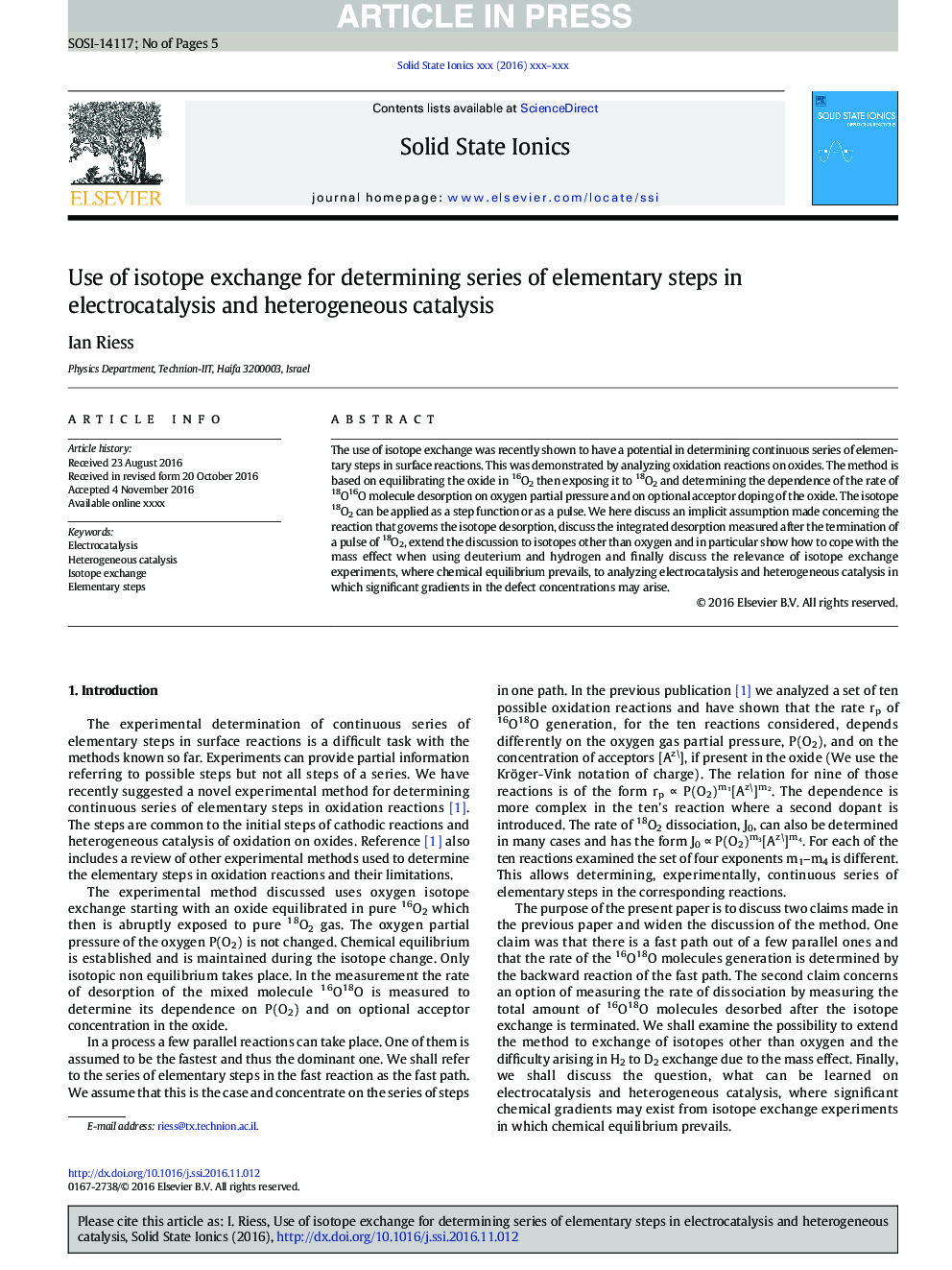| Article ID | Journal | Published Year | Pages | File Type |
|---|---|---|---|---|
| 5150426 | Solid State Ionics | 2017 | 5 Pages |
Abstract
The use of isotope exchange was recently shown to have a potential in determining continuous series of elementary steps in surface reactions. This was demonstrated by analyzing oxidation reactions on oxides. The method is based on equilibrating the oxide in 16O2 then exposing it to 18O2 and determining the dependence of the rate of 18O16O molecule desorption on oxygen partial pressure and on optional acceptor doping of the oxide. The isotope 18O2 can be applied as a step function or as a pulse. We here discuss an implicit assumption made concerning the reaction that governs the isotope desorption, discuss the integrated desorption measured after the termination of a pulse of 18O2, extend the discussion to isotopes other than oxygen and in particular show how to cope with the mass effect when using deuterium and hydrogen and finally discuss the relevance of isotope exchange experiments, where chemical equilibrium prevails, to analyzing electrocatalysis and heterogeneous catalysis in which significant gradients in the defect concentrations may arise.
Related Topics
Physical Sciences and Engineering
Chemistry
Electrochemistry
Authors
Ilan Riess,
